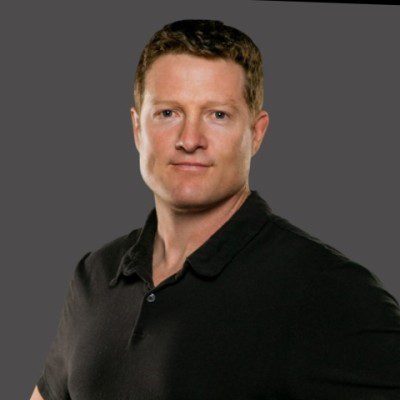Leadership Development: High-Performing Teams Episode at a Glance
- Guest Stephen Drum shares what motivated him to join the Navy SEALs.
- What is warrior toughness?
- How to apply the Navy SEAL learnings to creating high-performing teams in your business.
In this episode…
The Lazy CEO Podcast guest on this episode is Stephen Drum. Stephen is a 27-year, Navy SEAL retired combat vet and he now speaks on leadership, some of the lessons that they learned and developed through his many years of leading people through dangerous, high-stress, mission-critical, environments, which we can all learn a lot from as we run our business.
Here is a little bit of the conversation between Jim Schleckser, CEO of The CEO Project, and Stephen Drum.
Jim:
What is warrior toughness? How do you measure it? As CEOs we would really like to figure out when we hire somebody when the fire starts, are they going to run to the fire or away from the fire? What is toughness?
Stephen:
Well, to set the scene quickly, I’m sitting there, and we have what’s called an all-hands call. That’s where the whole entire command will sit and either the commander or somebody from outside will come in. So we’re doing an all-hands call in the chapel, which is the biggest place where everybody can all sit. And the chief of naval operations, who is the head admiral of the Navy, comes in and starts talking about his initiatives. And one of them was toughness. I have the bright idea to stand up and say, sir, how do we define toughness? How are we going to measure it? And how are we actually going to train it? Little did I know that about six months later, I would be locked in a room with a clinical psychologist, and a chaplain, and the three of us would be charged with figuring out how to get our sailors tough.
There were some things in the fleet that hadn’t really been going well. If you think of the fighting sailors from World War ii, we kind of lost that. And now we have things going on, ships colliding, missiles being fired; we need tougher sailors. And so of course, the first thing was we had to define what it is. And so, we defined toughness in three areas.
- First, you have to take a punch and keep on going. There’s the tactical definition, but also the life definition. So, literally, we’re on a ship, friends wounded, comrades are injured, and I have to get back up. I may be personally injured myself and I must get back in the fight. But it also takes a punch in my career. I didn’t get that promotion. Maybe a loss of a relationship or loss of a loved one, but I have to get up and move forward.
- Next, I must perform under pressure, in the clutch. It’s one thing to know the skills to say, I’ve been trained, I’ve practiced, but can you perform under pressure? Can you regulate those emotions? Can you maintain your calm and your composure? And lastly, the day-in, day-out grind. And that swings both ways. That’s a high-tempo operation that we would see in the SEAL teams, multiple combat operations a night for six months. The grind and the toll that takes both physically, emotionally, and mentally. But then also the other side of that coin, let’s say a radar operator on a destroyer in the middle of the ocean, at the end of that six-month deployment, staring at a screen. 99.9% of the time, nothing happens, but people are going die if that person is not locked on in case something does. So, it’s having that attention and commitment to that level of engagement for a long, protracted period.
- Finally, having the fundamental values, and beliefs, and knowing how to take action and behave in a way through principles that support those values and beliefs. Because not only do we need people that recognize this, therefore they can arrive at a higher level of commitment to what we need them to do. But we need our sailors, our warfighters, to be people of character. It’s one thing, to accomplish the tactical objective, but we need people to be people of the right character to make good moral and ethical decisions as well.
Jim:
Can everybody get there? I’ll give you an example. I was on a board of a company and, and we had some tough times, like missing numbers, bank covenant violation. The bank was ready to take the keys to the building. It was interesting to watch the performance of the executive team. Some ran toward, as we call it, ran towards the fire, right? They said, how can I help? What can I do? Let me take something on, let me right others.
Can everybody be brought to the point that they would run to the fire? Are they born or can they be made? And I always default to decide that yes, people are more predisposed to have certain traits, characteristics, and attributes to make them more gregarious, whatever that is. But ultimately, I believe that we can build that even if you tend to be an introvert, you can still do things. For example, I refuse to believe that somebody who’s introverted can’t go out and be a good sales rep.
Stephen:
I also believe that you can always be tougher. There must be a level of commitment that says this is important, and I’m going to do everything possible for me to set the table for my success, and for my team’s success. You can do your very best, but if you at the end of the day cannot be bought into that concept, then I’m going to have to exit you from my sphere.
Jim:
And that does happen. We talked about how this applies to the business environment. You could argue the stakes aren’t quite as high, but the ideas certainly translate. How do you translate that line of thinking to a business environment and give an example or two of how you’ve seen it work?
Stephen:
The concept that I talk about is the X and I think it’s important. My book is called Life on the X, but the X goes back to my time in the military. And it’s a military doctrine term, but you can think of it as X marks the spot. So if you rope out of a helicopter onto the rooftop of a building, we call that landing on the X.
I’m going to line up all my efforts and all my preparations to make sure that I show up, that I can handle curve balls, that I can pivot, that I can adjust, and that I can learn. Every engagement that you make, you must be intentional, whether it’s internal to your organization, to your customer, or to your partner. I must make sure that I align the skills, I identify the gaps in my performance so that when I walk in there, I’m calm and composed, but I also have that level of, okay, I’m hovering above, I can make a decision. I’m not too close to the problem. So really it’s about regulating your emotions.
For more of the conversation between Jim and Steven, listen to the full Podcast.
Resources in this episode…
- Stephen Drum on LinkedIn
- Jim Schleckser on LinkedIn
- The CEO Project
- Great Ceos Are Lazy: How Exceptional CEOs Do More in Less Time by Jim Schleckser
Thank you to our Guest
Stephen Drum is a combat-tested retired Navy SEAL Master Chief who has 27 years of experience leading and developing high-performance teams. As an in-demand speaker and consultant, he helps individuals and organizations such as CDW, Horizon Pharma, and 9 Energy develop leadership and performance strategies, so they can plan, prepare, and execute at the highest levels when it matters most.
Steve has trained and led U.S. and foreign partner special operations forces on high-risk and strategically vital missions across the globe, including combat operations in rag and Afghanistan.
He recently co-developed and taught “Warrior Toughness” training for The U.S. Navy. This vital program fundamentally changed the culture of the Navy in how it trains and prepares young sailors and officers for the acute stress of intense combat operations.
During his Navy career, Steve has personally trained thousands of elite military soldiers and Navy SEAL candidates, helping them succeed in severe training courses and overseas combat operations.
Sponsor for this episode…
This episode is brought to you by The CEO Project. The CEO Project is a business advisory group that brings high-caliber, accomplished CEOs together. Our team of skilled advisors is comprised of current and former CEOs who have run both public and private sector companies across multiple industries. With our experience and expertise, we guide hundreds of high-performing CEOs through a disciplined approach that resolves constraints and improves critical decisions. The CEO Project has helped high-performing, large enterprise CEOs with annual revenues ranging from $20M to over $2 billion to drive growth and achieve optimal outcomes. If you are an experienced CEO looking to grow your company, visit www.theCEOProject.com.










